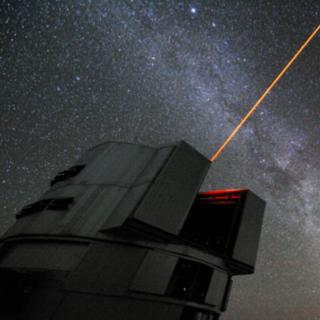Bibcode
Kacharov, N.; Battaglia, G.; Rejkuba, Marina; Cole, Andrew A.; Carrera, R.; Fraternali, Filippo; Wilkinson, Mark I.; Gallart, C.; Irwin, Mike; Tolstoy, Eline
Referencia bibliográfica
Monthly Notices of the Royal Astronomical Society, Volume 466, Issue 2, p.2006-2023
Fecha de publicación:
4
2017
Número de citas
64
Número de citas referidas
57
Descripción
Transition type dwarf galaxies are thought to be systems undergoing the
process of transformation from a star-forming into a passively evolving
dwarf, which makes them particularly suitable to study evolutionary
processes driving the existence of different dwarf morphological types.
Here we present results from a spectroscopic survey of ˜200
individual red giant branch stars in the Phoenix dwarf, the closest
transition type with a comparable luminosity to `classical' dwarf
galaxies. We measure a systemic heliocentric velocity Vhelio
= -21.2 ± 1.0 km s-1. Our survey reveals the clear
presence of prolate rotation that is aligned with the peculiar spatial
distribution of the youngest stars in Phoenix. We speculate that both
features might have arisen from the same event, possibly an accretion of
a smaller system. The evolved stellar population of Phoenix is
relatively metal-poor (<[Fe/H] > = -1.49 ± 0.04 dex) and
shows a large metallicity spread (σ[Fe/H] = 0.51
± 0.04 dex), with a pronounced metallicity gradient of -0.13
± 0.01 dex arcmin-1 similar to luminous, passive dwarf
galaxies. We also report a discovery of an extremely metal-poor star
candidate in Phoenix and discuss the importance of correcting for
spatial sampling when interpreting the chemical properties of galaxies
with metallicity gradients. This study presents a major leap forward in
our knowledge of the internal kinematics of the Phoenix transition type
dwarf galaxy and the first wide area spectroscopic survey of its
metallicity properties. A table containing the measured velocities,
metallicities, and CaT equivalent widths of all spectroscopic targets is
available online at the CDS.
Proyectos relacionados

Evolución Galáctica en el Grupo Local
La formación y evolución de galaxias es un problema fundamental en Astrofísica. Su estudio requiere “viajar atrás en el tiempo”, para lo cual hay dos enfoques complementarios. El mas extendido consiste en analizar las propiedades de las galaxias a diferentes distancias cosmológicas. Nuestro equipo se concentra en el otro enfoque, denominado
Emma
Fernández Alvar